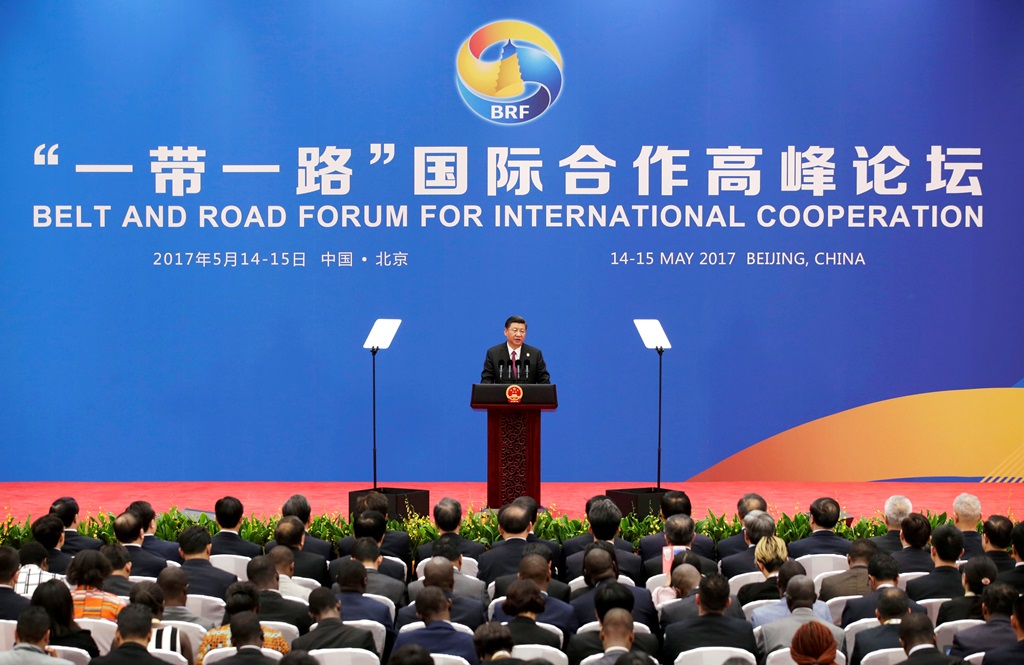China’s Growing Engagement in South Asia

China’s Growing Presence in South Asia
In Pakistan, the China is implementing the China-Pakistan Economic Corridor (CPEC) the BRI flagship project, worth approximately $62 billion dollars. The CPEC entails, inter alia, constructions of gas and oil pipelines, highways and railways connecting the Chinese province of Xinjiang to the Arabian Sea, the deep sea port in Gwadar and a number of energy projects. The deterioration of relations between Pakistan and the U.S. during the presidency of Donald Trump, as well as Indian attempts to isolate Islamabad internationally, have further deepened the “all weather partnership” with China. Similar to the Pakistani project, China plans to implement the China-Myanmar Economic Corridor in Myanmar. The estimated cost of this project is about $10 billion. It would include 1,700 km of roads and railways connecting the Chinese Yunnan Province with the Bay of Bengal and the sea port there with the special economic zone in Kyaukphyu. Myanmar’s authorities agreed to implement the project only in 2018, after they became the object of international ostracism for expelling the Rohingya minority in 2017. At that time, China was also allowed to operationalise the pipeline built in 2014.
The biggest advances occurred in relation to the smaller countries of the region, traditionally dominated by India. In recent years, China has lent about $9 billion to Sri Lanka for investments in ports, roads and railways, and today is responsible for a quarter of the country’s foreign debt. In 2017, unable to repay the debt, Sri Lanka transferred 70% of stakes in the $1.3 billion China-built port of Hambantota to a Chinese company for a 99 year lease. In 2016, during the first visit to Bangladesh by a Chinese president for 30 years, 29 agreements were signed for infrastructure projects worth approximately $24 billion, although only a small number of these entered the implementation phase. The Maldives has developed much closer relations with China since the change in power in 2014. This country of small islands has eagerly accepted China’s loans for infrastructure development, estimated now at $1.4 billion, or 75% of their foreign debt. Finally, Nepal joined the BRI following the crisis in relations with India and an economic blockade of the country in 2015. China also increases technical assistance and counter-terrorism cooperation with Afghanistan, and proposes including this country within the CPEC corridor.
The implementation of BRI implies closer economic and cultural ties between China and the countries of the region. China’s export to South Asian countries (except India) increased by 54% between 2013 and 2017 (from $31.1 billion to $48.2 billion), while imports rose by only 10% (from $6.9 billion to $7.6 billion). In 2017, China signed a free trade agreement with the Maldives (it has had such an agreement with Pakistan since 2007) and has been negotiating another agreement with Sri Lanka since 2015. Across the region, China has opened 10 Confucius Institutes and offers thousands of scholarships for study in China. The Chinese have also become an important source of income from tourism, now accounting for more than half of all foreign visitors to the Maldives, and the second largest group in Sri Lanka.
Strengths and Challenges to the Chinese Approach
China’s successes in the region are possible thanks to a strategy (also used in other regions, e.g., in Africa) combining two elements. First, China offers financing for infrastructure investments. In addition to bilateral loans, South Asia is the largest beneficiary of the Asian Infrastructure Investment Bank set up by China. Of the banks 34 ongoing projects, 15 are implemented in the region (with the majority in India), and 17 of a proposed 21 schemes originate there. Second, China presents itself as a partner that does not interfere in the internal affairs of the countries of the region. It emphasizes that it does not demand economic or political reforms and offers assistance with no strings attached. China also uses tensions between the countries of this region and third powers around some political issues or human rights (such as the persecution of the Rohingya in Myanmar, war crimes in Sri Lanka and constitutional change in Nepal). This makes China an indispensable partner providing political protection against international sanctions (e.g., under the UN Security Council). China is also the main supplier of weapons for governments that cannot count on Western suppliers (Sri Lanka, Myanmar and Pakistan).
At the same time, the growing presence of China in the region raises ever more controversy and local resistance. The takeover of the Hambantota port in Sri Lanka became the main example of “debt trap diplomacy”, prompting authorities of Pakistan, Myanmar and Sri Lanka to renegotiate Chinese loans and limit the scale of investments. The lack of transparency (neither the value nor the terms of the loans granted by China are public) raises suspicions of corruption and makes it difficult to assess the economic viability of projects. The growing trade deficit of all countries in the region and the implementation of projects by Chinese companies are of concern. As a result, anti-Chinese sentiment is rising in many societies. Recent political events in several countries were also unfavourable for China. In 2018, the presidential election in the Maldives was unexpectedly lost by the pro-China president Abdulla Yameen. In Sri Lanka, during the constitutional crisis in autumn 2018, China supported former president Mahinda Rajapaksa, but his return to power was ultimately foiled by the Supreme Court. Imran Khan, Pakistan’s prime minister since July 2018, distances himself more from China. He ordered a review of investments under CPEC, and secured a new package of financial assistance from the Gulf States.
Conclusions and Prospects
China manages to pursue its interests and increase its economic, political and cultural presence in most countries of South Asia. Thanks to planned investments, the landlocked regions of China are to gain access to the Indian Ocean. The success of projects is also important for boosting the credibility of the BRI. Greater involvement of China also brings benefits to the countries of the region. It increases their access to financing for necessary infrastructure investments and gives them greater room for manoeuvre in foreign policy. It boosts their strategic importance and encourages greater appreciation from other powers. As a result, for example, India softened its policy towards Nepal and increased its own economic aid to its neighbours. Japan and Australia have also announced new programmes for infrastructure development in the region. At the same time, the increasingly visible negative consequences of China’s involvement and growing obstacles Beijing faces in the region may prompt it to review some elements of the current model of operation (such as addressing the trade deficit or reducing some debts).
China’s policy in South Asia is in line with its strategy of global expansion and rivalry with the United States. This limits the influence of India, perceived as U.S. partner and counterweight to China in the region. The U.S. and India are afraid, among other things, that the ports built by the Chinese may in future serve as a naval bases (next to Djibouti), which would alter the balance of power in the Indo-Pacific region, to the detriment of both. Hence, the U.S. administration criticises Chinese “checkbook diplomacy” and warns the region’s countries against the loss of sovereignty. However, the policy of scaring governments with the threats posed by China will be more effective only if supported by an alternative offer of financial assistance.
For the European Union, China’s activities mean losing local markets and limiting influence on the internal situation in the countries of the region, for example in the fields of human rights protection and economic reforms. Chinese involvement may also make it difficult for the EU to disseminate standards regarding infrastructure investments in line with the EU Strategy on Connecting Europe and Asia, adopted in 2018. In order to maintain influence in the region, the EU may consider increasing support for South Asia after 2020. It is also worth strengthening the coordination of actions with India. Examples of joint EU and Indian pressure to end the constitutional crisis in Sri Lanka and the democratic one in Maldives in 2018 show that such cooperation can bring tangible results. It is also worth attempting to convince China and the countries of the region that greater transparency in terms of loans and compliance of investments with financial or environmental standards are ultimately in their own interests.



